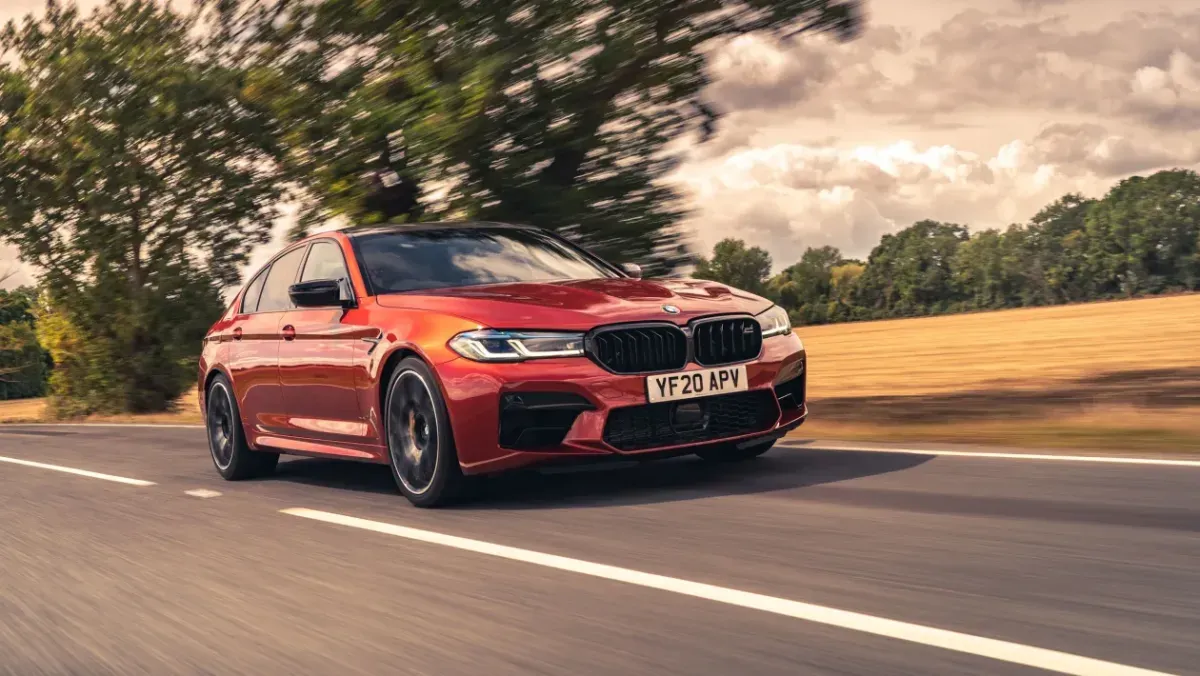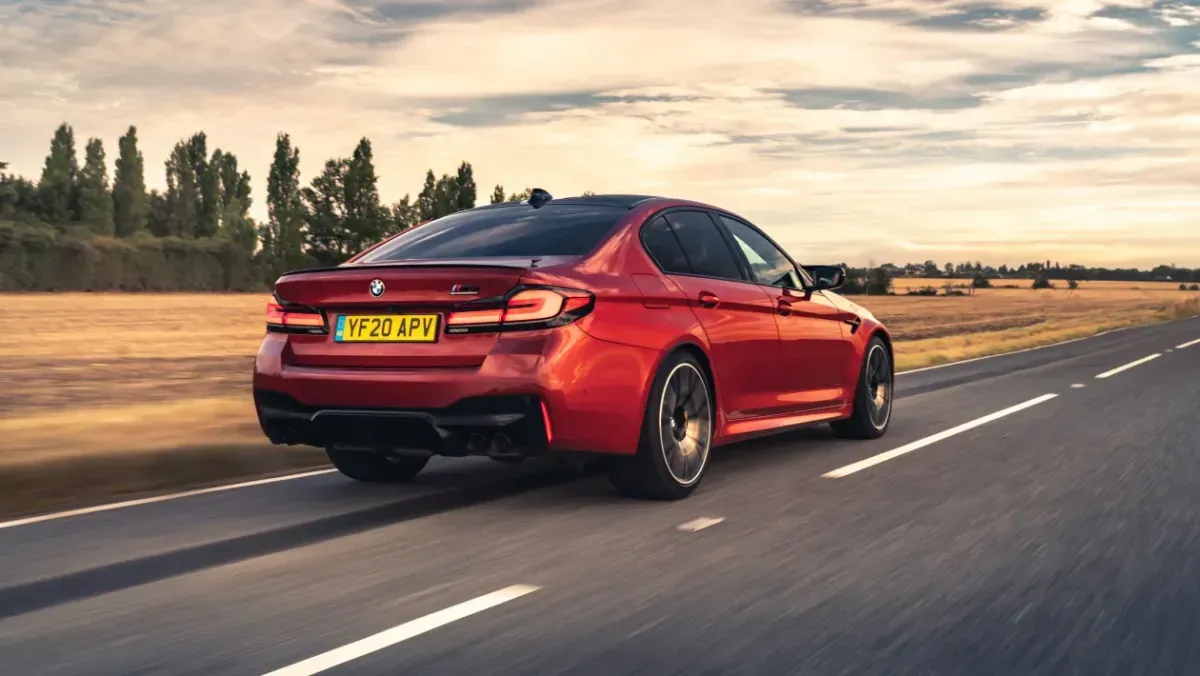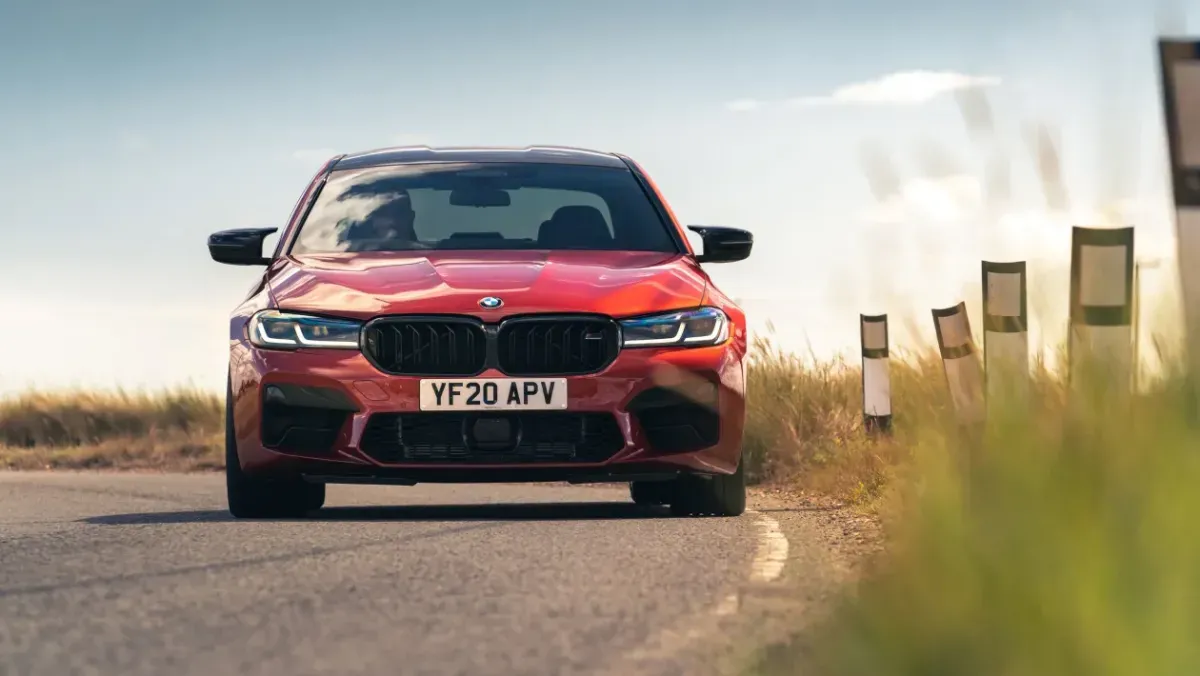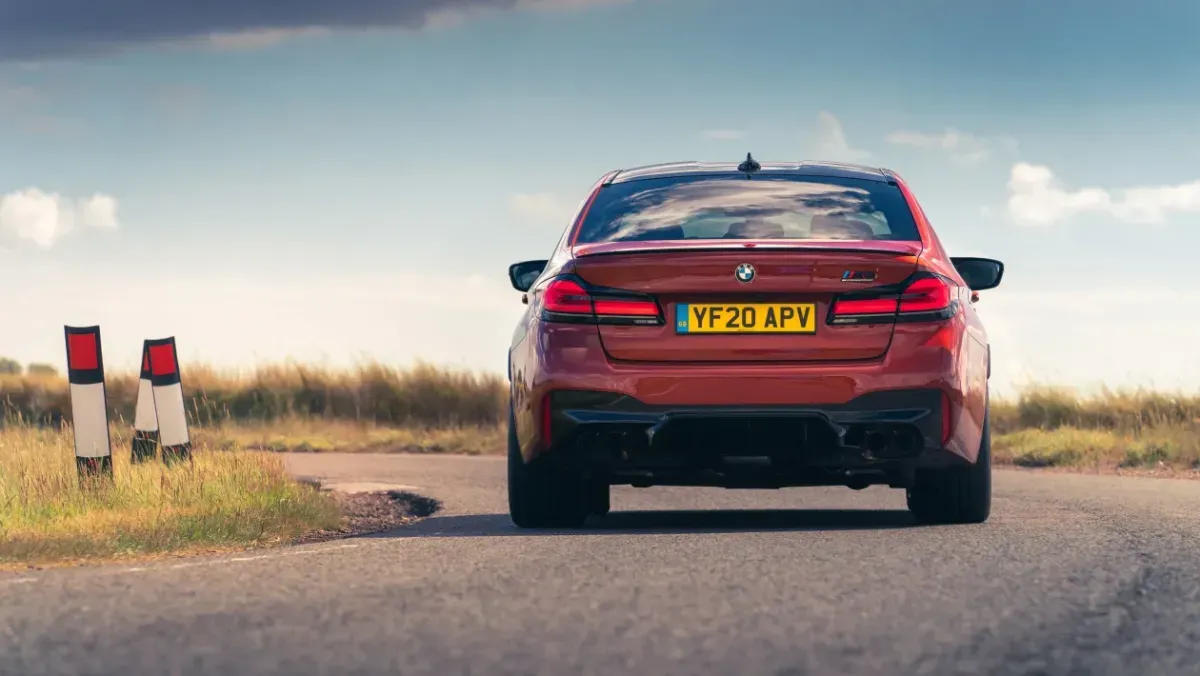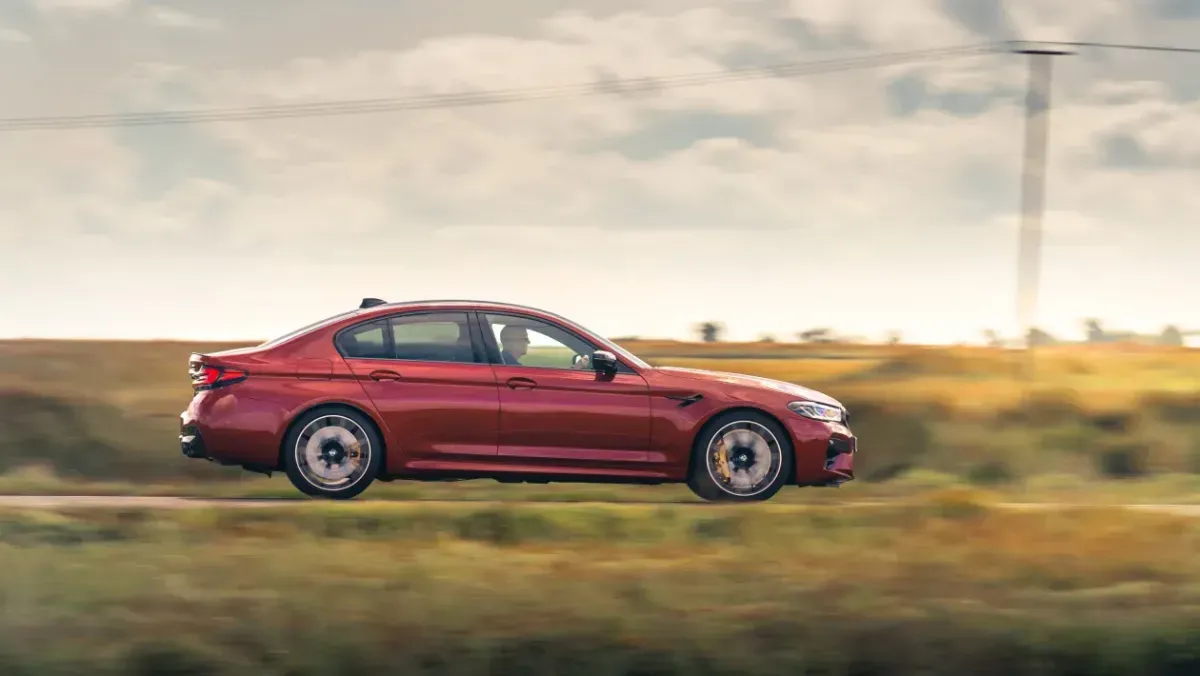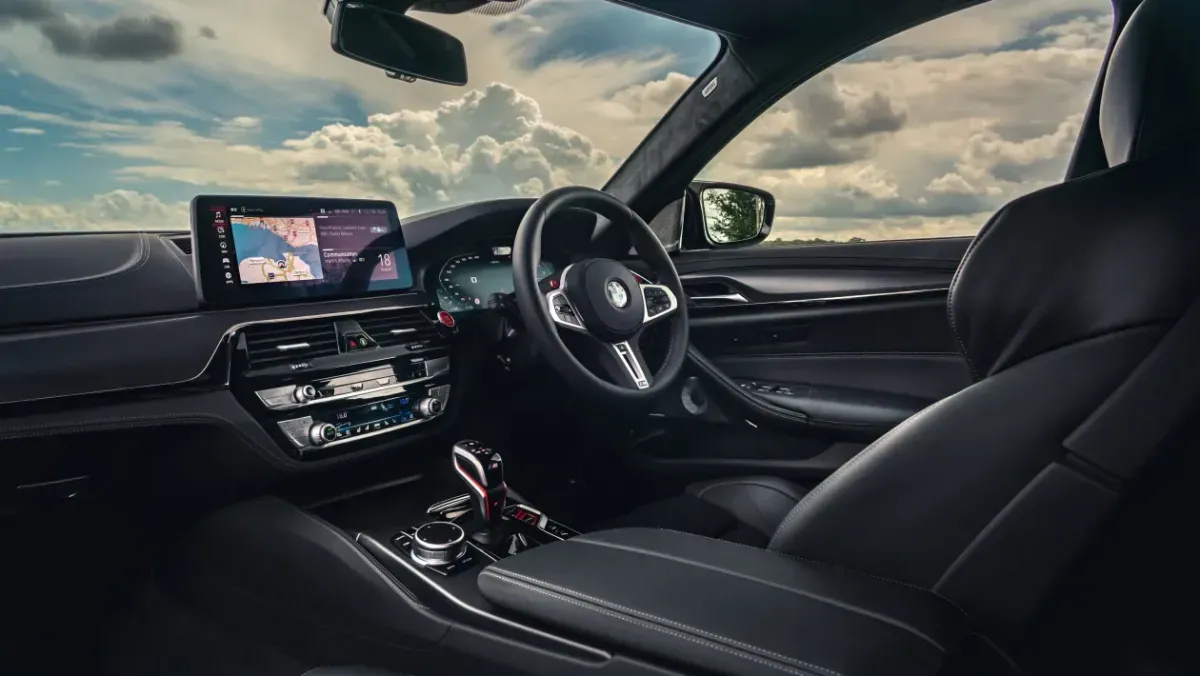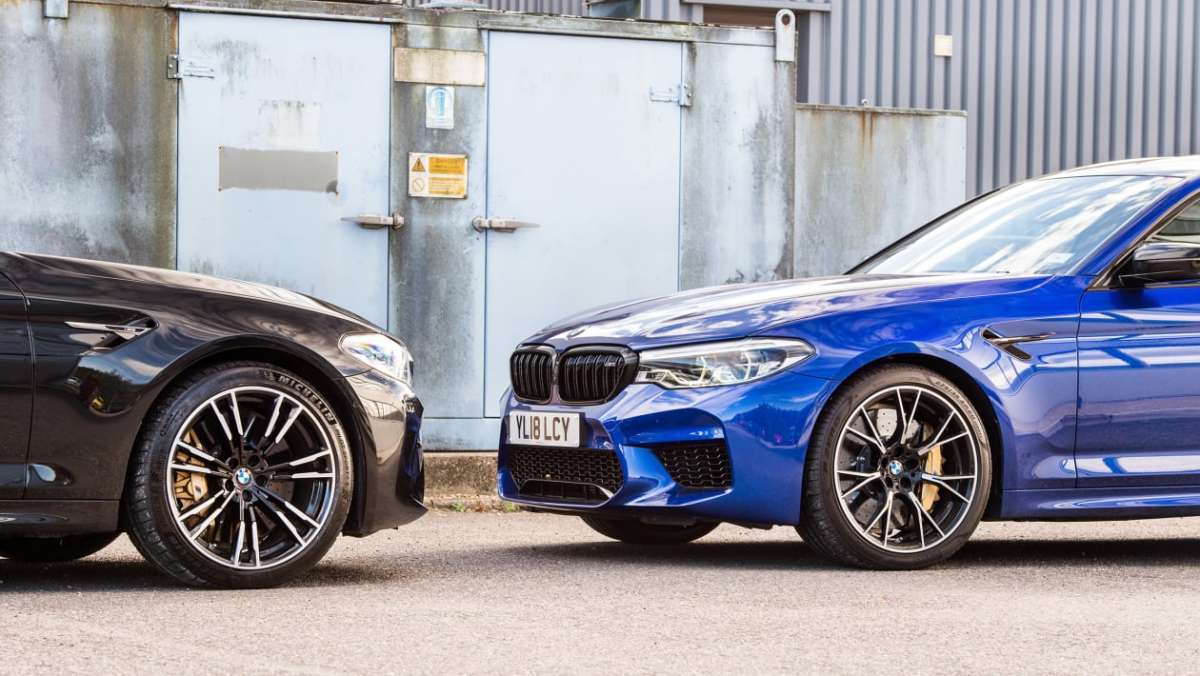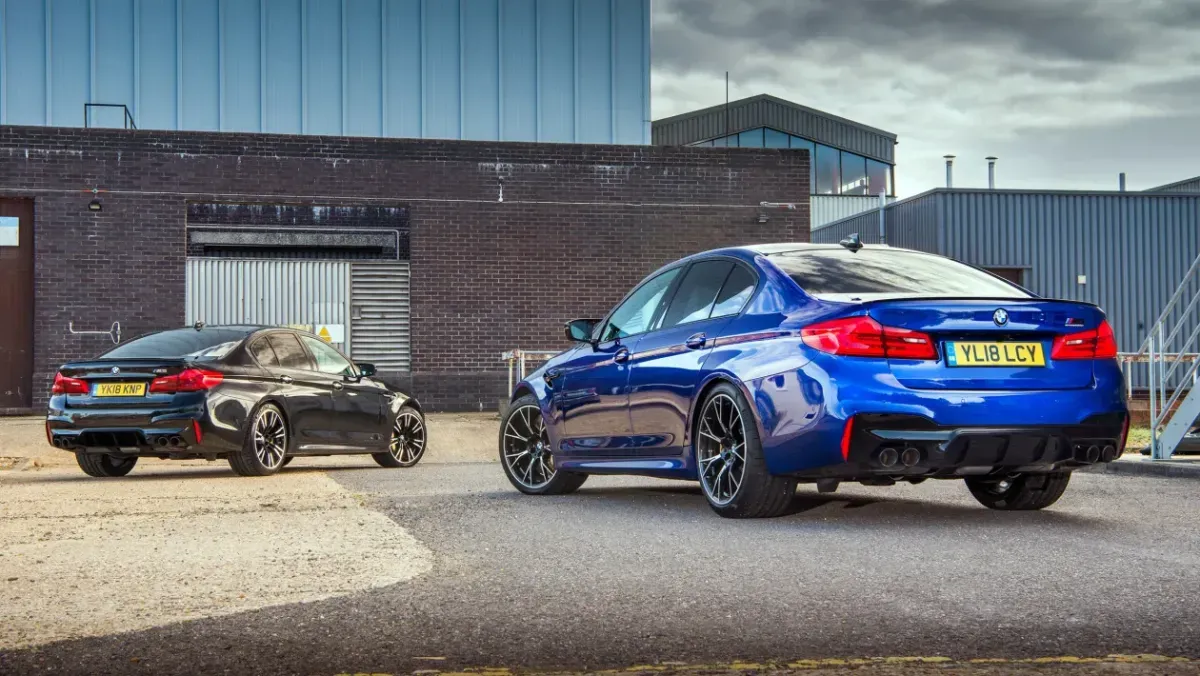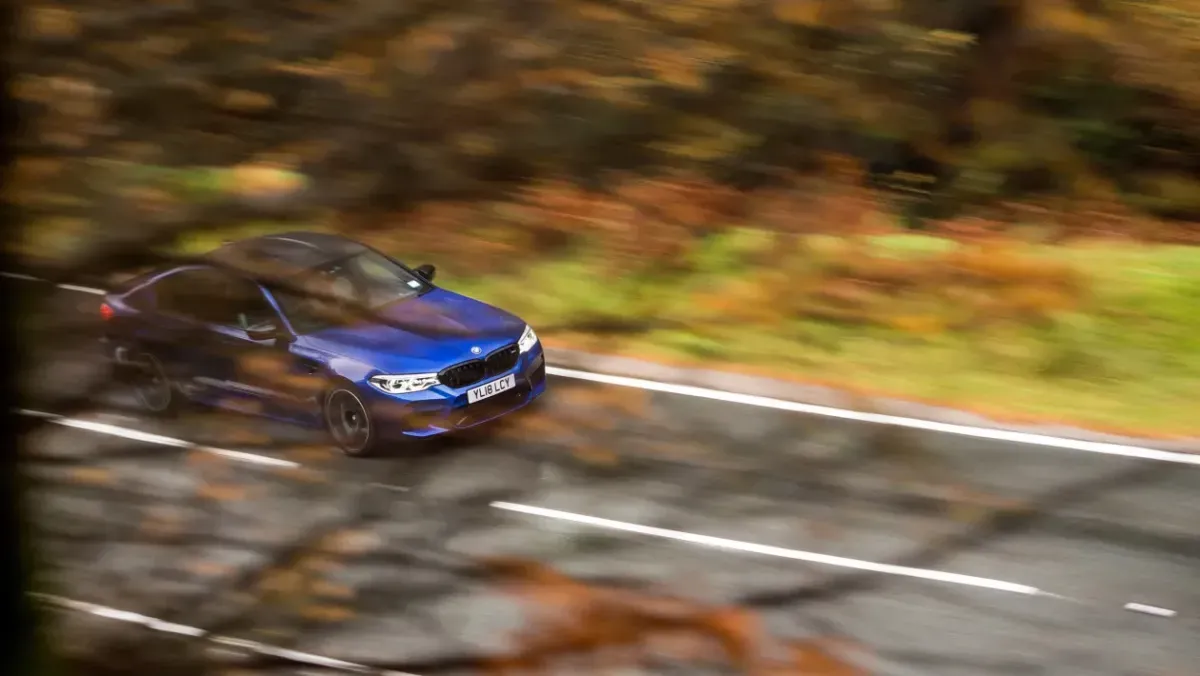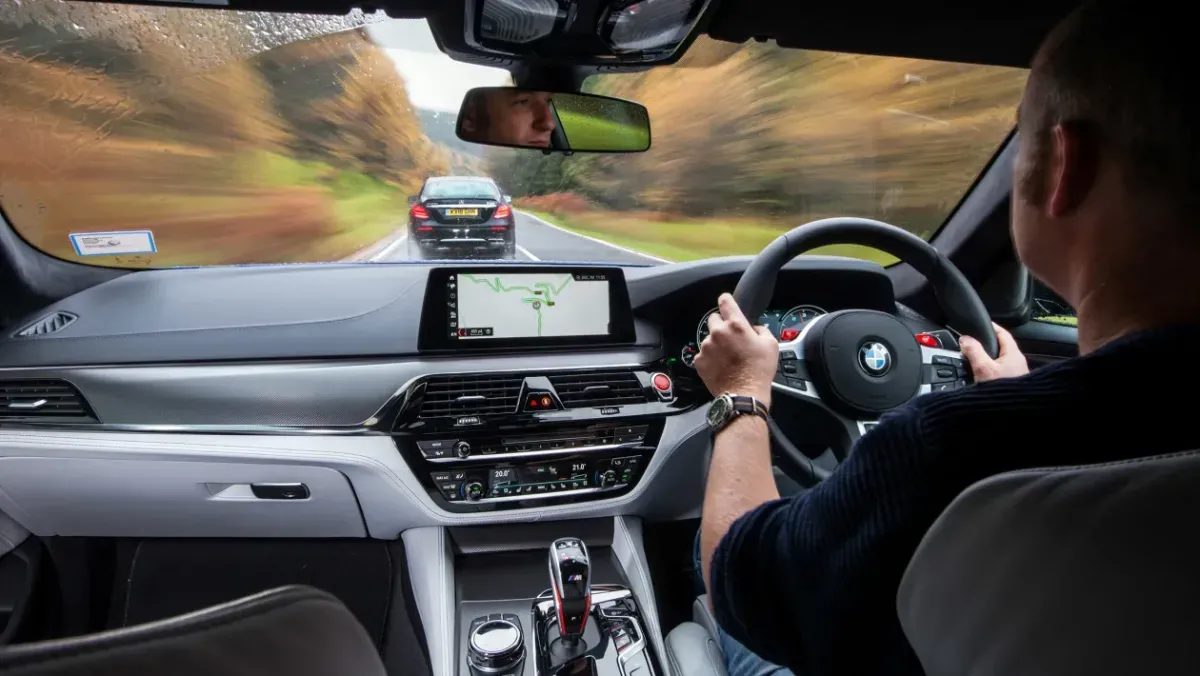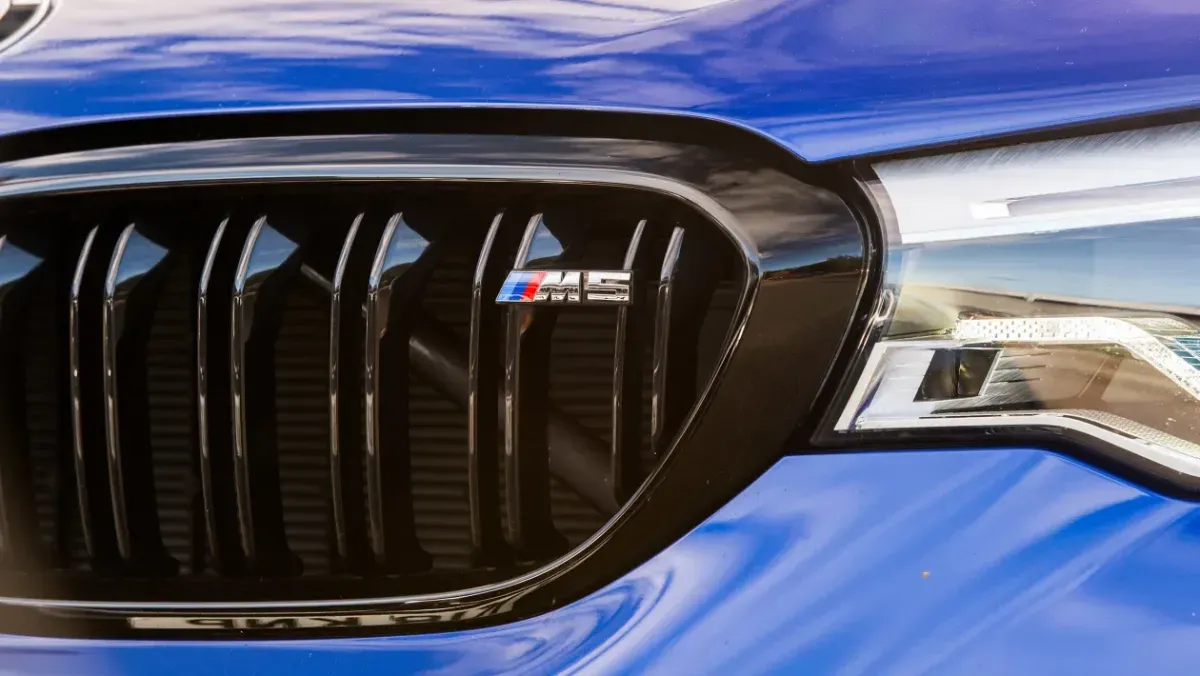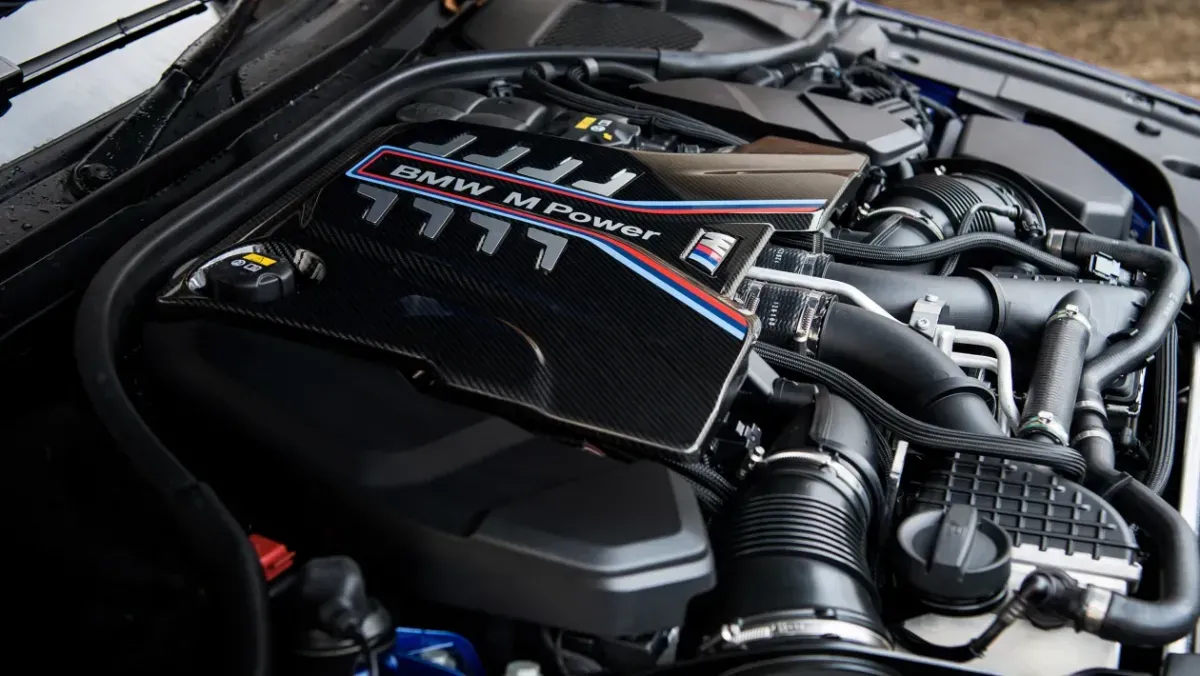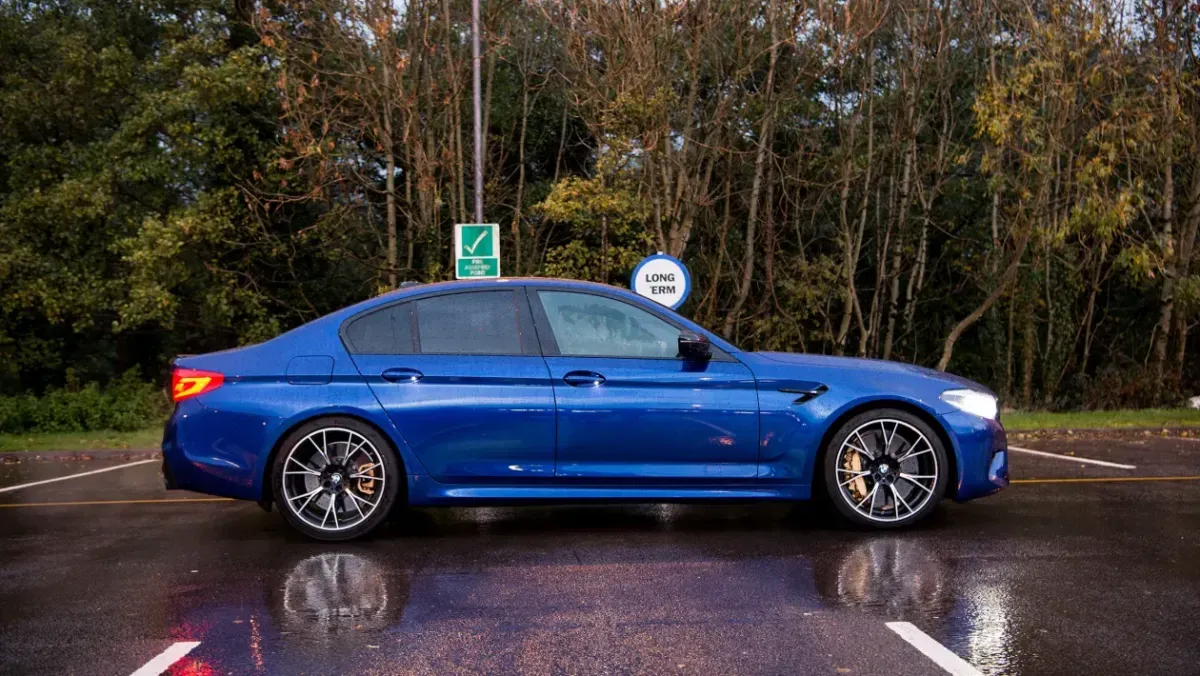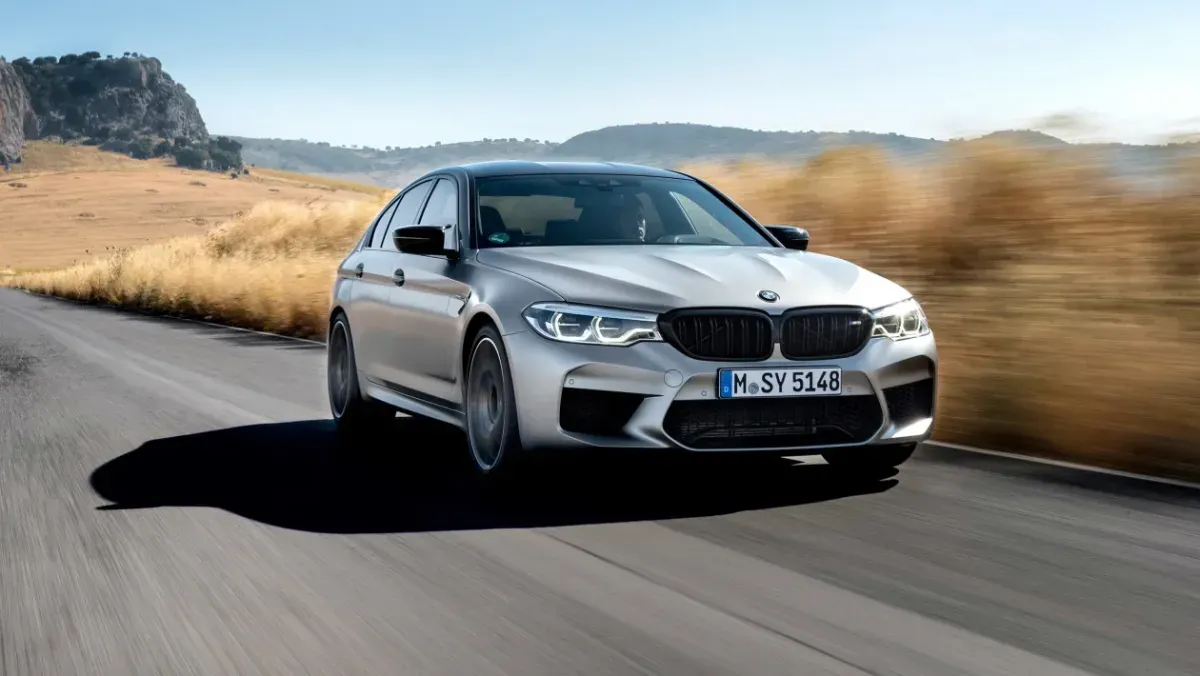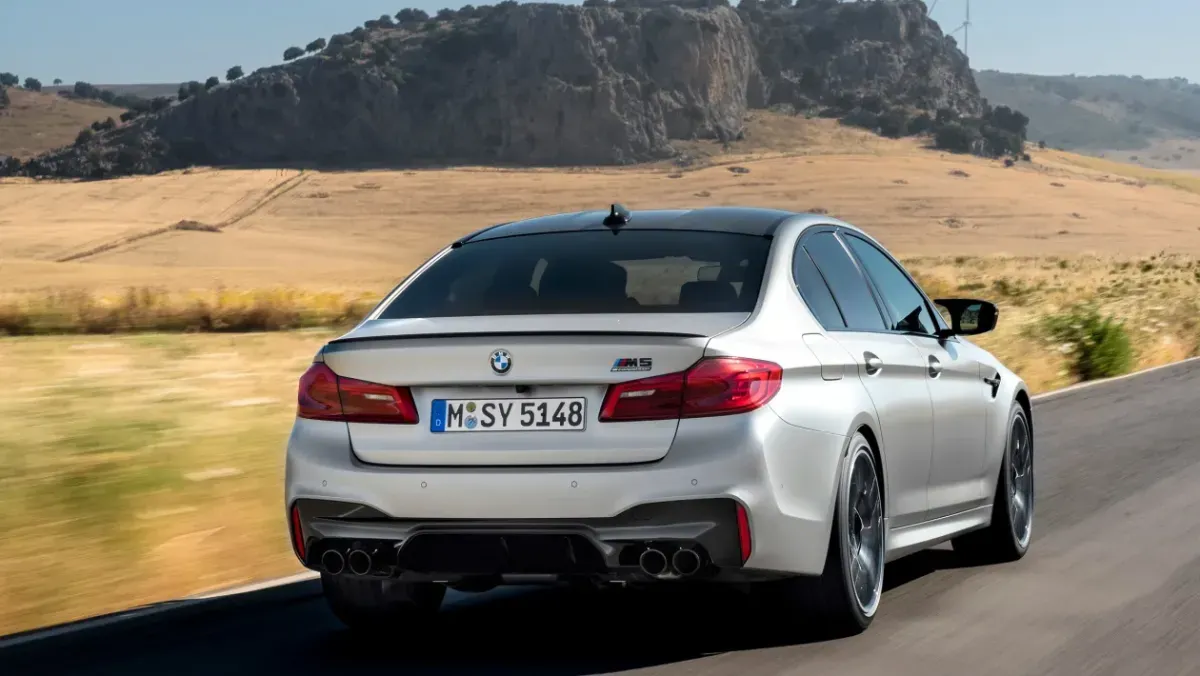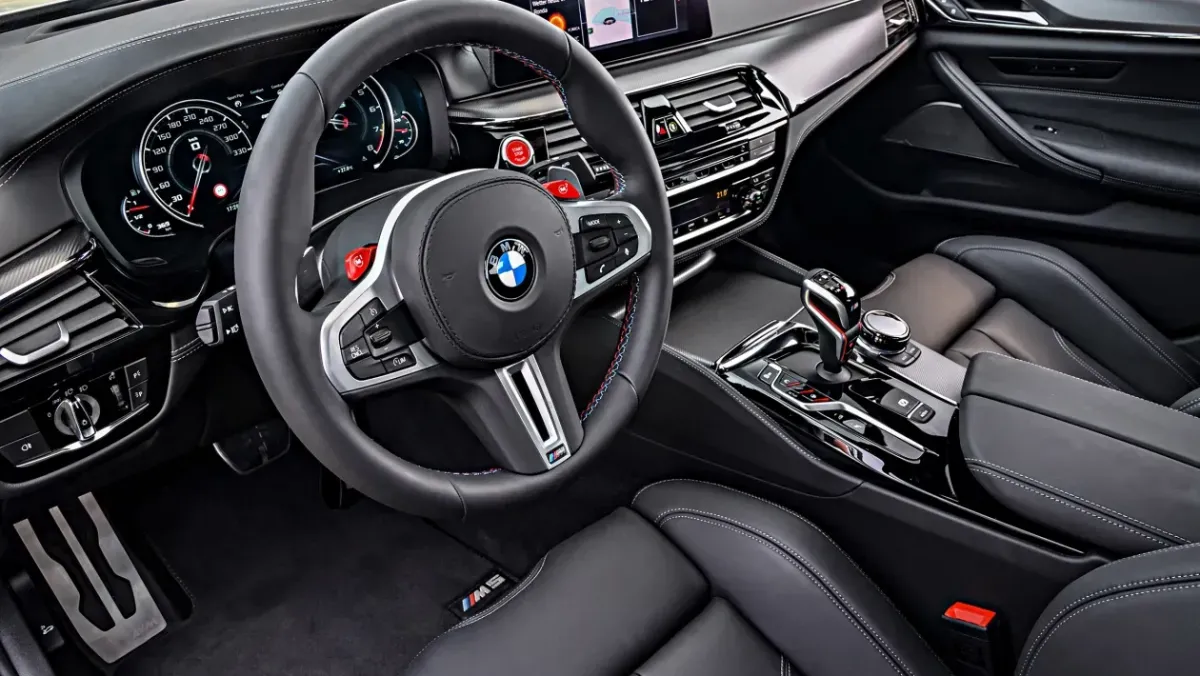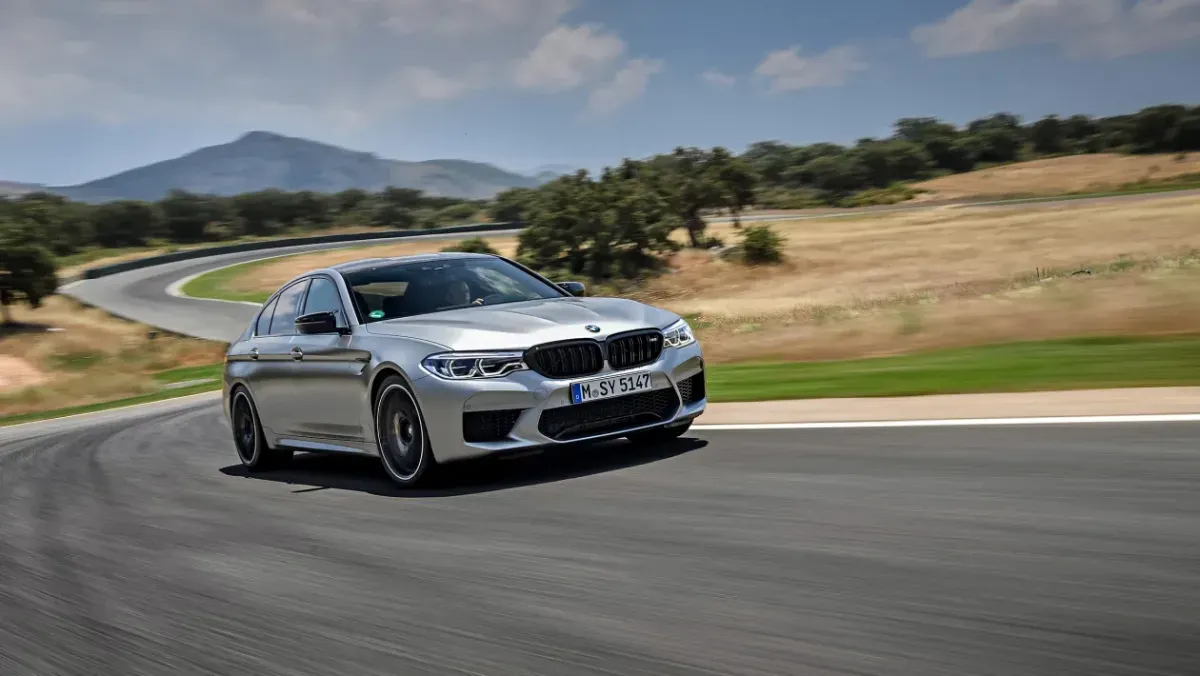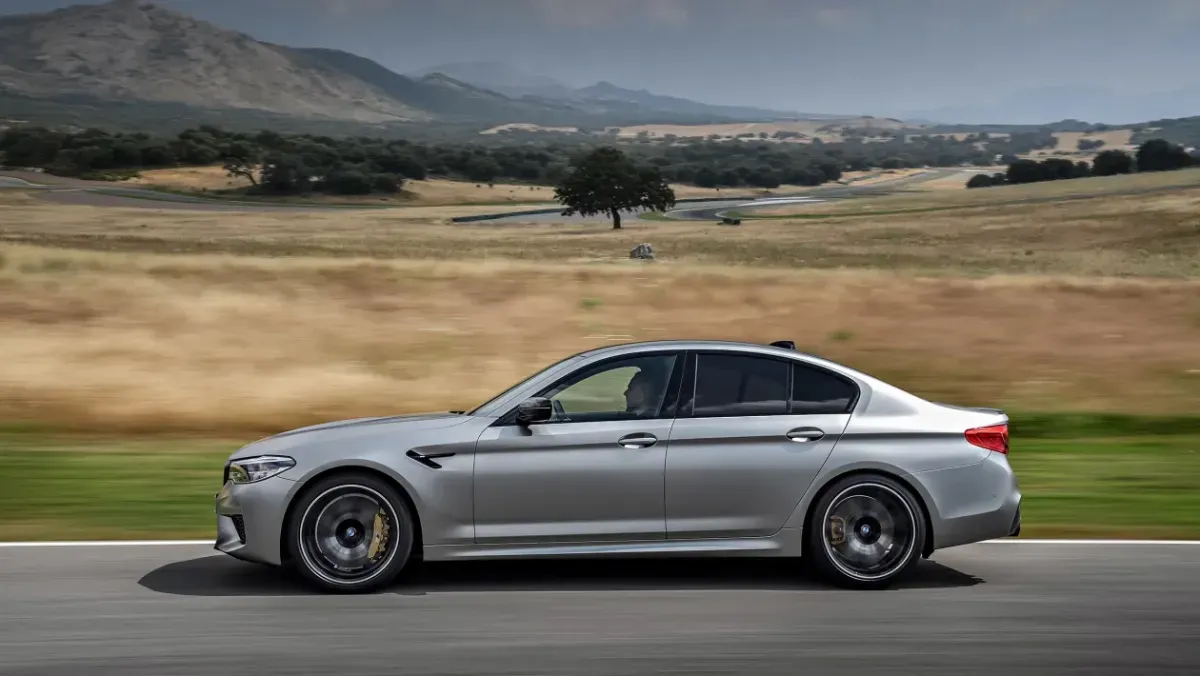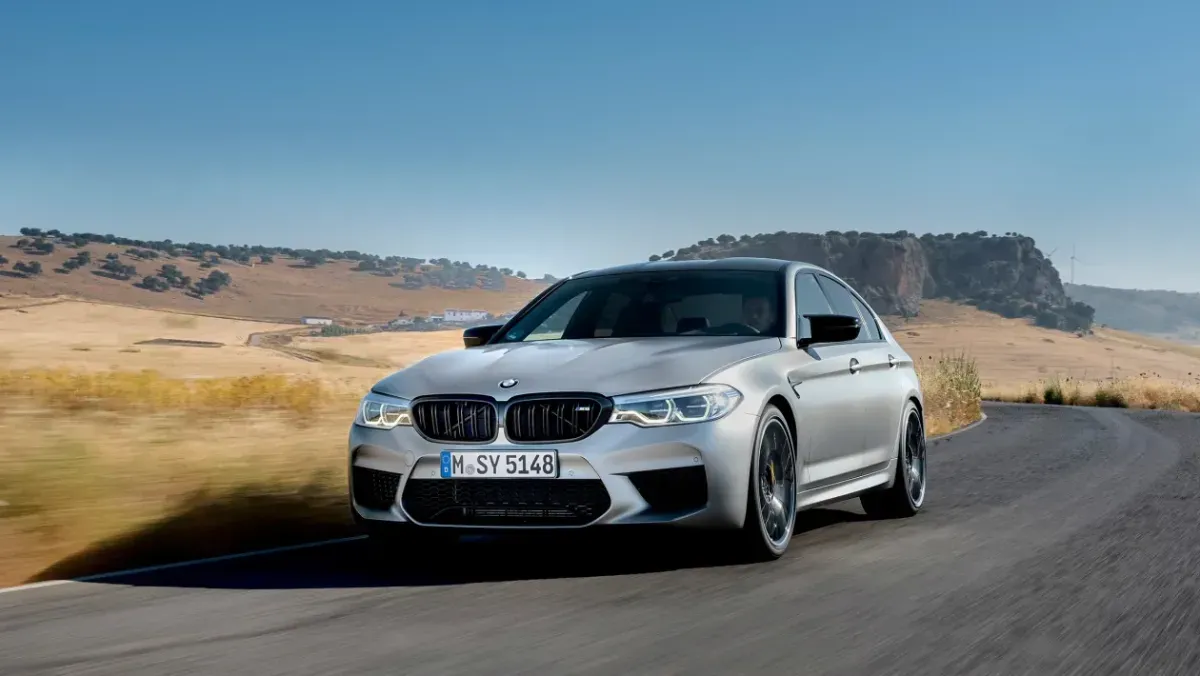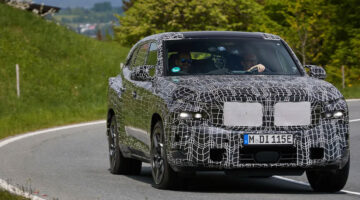The BMW M5 is now only available in Competition trim, but this is no bad thing as it remains a finer-honed version of the standard M5
The BMW M Competition recipe is now fairly well refined. Simply take an existing M-car, add a touch more power and treat the suspension to a few well-chosen tweaks aimed at sharpening the driving experience. It’s an approach that has been followed to the letter (and number) with the M5 Competition, which now sits alongside the special edition M5 CS. Launched quickly into the current M5’s model cycle, the Competition is a rival for supersaloons such as the Mercedes-AMG E63 S.
In the Competition upgrade, BMW breathed on the twin-turbocharged 4.4-litre V8, raising power to 616bhp – although torque remained unchanged at 553lb ft. Performance gains are minimal, but the optional M Driver’s pack does raise the top speed from a limited 250kph to 305kph. Of more interest are the changes aimed at sharpening the handling, with a lower ride height, stiffer springs, recalibrated dampers and altered geometry. It all adds up to make a car that’s more involving and agile than before, yet with barely any reduction in comfort. What the updates can’t do, however, is shrink the size of the BMW, so it still feels vast.
External changes over the standard M5 are small but worthwhile, particularly the 7mm drop in ride height, which gives the car more of a hunkered and aggressive stance. There are also new 20-inch forged alloy wheels and a subtle gloss black finish for the trim and the badges. Inside it’s business (class) as usual, with only the red-finish starter button giving the game away that this is the Competition model.
While the BMW M5 Competition is certainly a lot of money at $130,355, it’s also a lot of car, being the only BMW with this fire-breathing powertrain to dip below six figures, a price bracket the closely related M8 Competition and its derivatives occupy.
For the first time in the history of the iconic supersaloon, BMW released a CS variant in 2021, with a 626bhp output making it the most powerful M5 ever produced with a 70kg reduction in weight and a much more focused chassis..
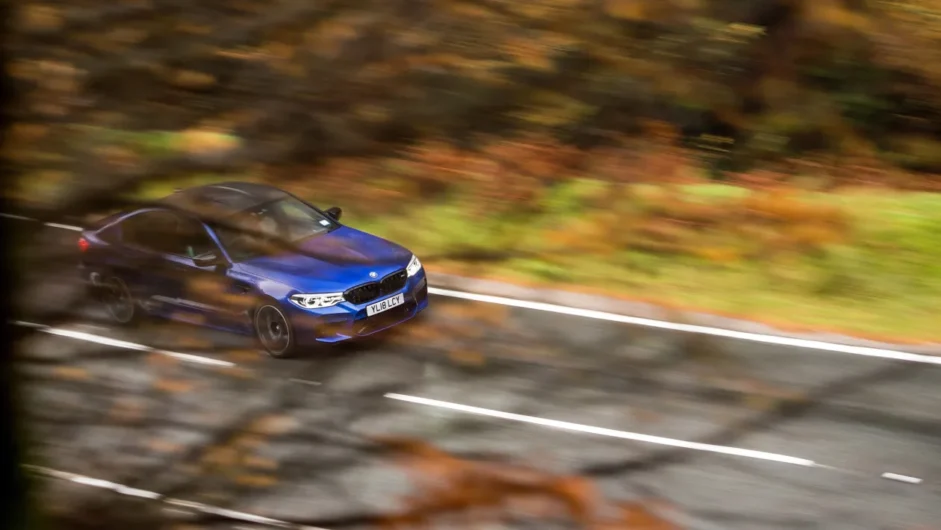
Prices, specs and rivals
The BMW M5 Competition weighs in at a not inconsiderable $130,355, which is $18,110 more than the standard M5 was when it was launched back in 2017. That said, if you’re committed to spending $125,000 on a car, then the extra outlay is hardly likely to sway your decision. More importantly, the improvements to the chassis are so tangible and welcome, delivering a level of poise and engagement we expect from M-cars, that you don’t begrudge the extra outlay.
The $127,420 Mercedes-AMG E63 S undercuts the M5 Competition, although not by much, and on the surface appears to offer more bang for your buck. Its 604bhp twin-turbo 4-litre V8 is fractionally down on power, but its bellowing V8 soundtrack means it lacks nothing in drama. And while it lacks the ultimate precision and poise of the M5, it can still be hustled at alarming speeds, while the ability to switch from four- to two-wheel drive will make you very popular with your local tyre fitters.
Close on power and arguably even more engaging to drive, the 621bhp Porsche Panamera Turbo S is even more expensive at $171,330. Like its rivals here it’s four-wheel drive, but while it can’t be switched into two-wheel-drive mode the Porsche’s clever set-up allows you to have plenty of rear-drive hilarity if the mood takes. It’s not quite as spacious as the BMW and Merc, but the hatchback Panamera isn’t short of practicality, plus it’s just as refined and even more beautifully finished.
Audi’s RS7 lacks the Porsche’s sense of occasion, the BMW’s capability and the Merc’s theatricality, but is arguably more polished than all of them, riding and handling in a way belying its 22-inch wheel and tyre package, and comes in at a slightly lower $127,300.
Engine, gearbox and technical specs
Powering the M5 Competition is the familiar twin-turbocharged V8 that produces 616bhp (an increase of 24bhp over the previous ‘standard’ M5), while torque remains unchanged at a rippling 553lb ft. This drives through an eight-speed torque-converter auto, which is connected to BMW’s trick M xDrive four-wheel-drive transmission. This specific engine, gearbox and all-wheel-drive set-up appeared in the M5 first, but has now spread to the BMW M8 and X5M/X6M twins.
Many of the Competition’s upgrades have been concentrated on the chassis, sitting 7mm lower than that of the standard M5, which in combination with the new 20-inch forged alloys gives the Competition a much more purposeful stance. Other suspension changes include the addition of ten per cent stiffer springs complete with recalibrated adaptive dampers, firmer anti-roll bar mounts front and rear, ball-joints for the rear toe links and more negative camber for the front wheels. Finally, the engine mounts have been changed for items that are 50 per cent stiffer.
Elsewhere the Competition is the same as the standard M5, which means you get the same M xDrive four-wheel-drive system. This allows you to run with all four wheels driven, or to disengage the front axle for some good old-fashioned M-car rear-driven fun – although you need to disengage the stability control to engage this function, so you’ll need to be on high alert behind the wheel. Happily, the transmission has rear-biased feel even in its standard mode, so you can have fun without fear of taking up the whole width of the road on the exit of a corner.
Performance and 0-100 time
The standard M5 wasn’t exactly a sluggard, evidenced by the fact the Competition knocks just a tenth off the 0-100kph time, clocking the benchmark in 3.3sec. However, by the time the Comp hits 200kph it’s three-tenths ahead of its less powerful M5 sibling, which is useful to know.
In all honesty, any performance gains are hard to detect, the Competition accelerating with the same deranged intensity that puts it toe to toe with some seriously exotic sports cars. What the Comp does add is a little extra spice in the form of a new Sports exhaust. This set-up allows the V8 to find the full baritone bark of its voice, and while it’s not as bombastically loud as the Mercedes-AMG E63 S, the M5’s more restrained soundtrack is more in keeping with the Q-car character of a true supersaloon.
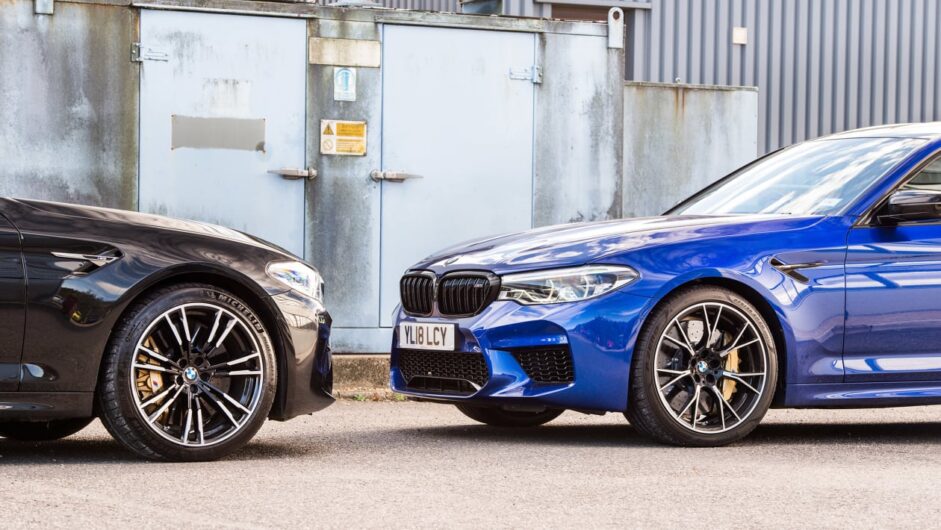
Turbo lag is only hinted at with BMW’s S63 V8, and once engaged and under full throttle feels good for every one of its 616bhp. The flat torque curve barely recedes at high revs too, keeping the engine’s urgency strong even if you don’t really need to keep it in that low gear for the performance.
The transmission only accentuates the almost endless-feel to the engine, with short ratios and super slick changes that do a good impression of DCT-like changes. Keep your foot buried for more than a moment and you’ll be quickly exceeding local speed limits to an alarming rate though, making it a sometimes frustrating car to drive on challenging roads.
Ride and handling
The BMW M5’s reputation as the most dynamic of supersaloons hasn’t quite been the foregone conclusion it might have once been over the last couple of generations. As its physical size and spread of capability has expanded, so too has its interaction been dulled. This is only heightened by rivals such as the Mercedes-AMG E63 S, which seems to have swapped roles with the BMW by feeling more dynamic and less polished as an everyday car.
The Competition’s upgrades over the standard M5 that was released in 2017 are welcome though, and obvious the moment you move away. The M5 rides with a little more stiffness than before, even in its Comfort mode, yet it’s still fairly supple and once you’ve upped the pace any small loss in compliance is easily offset by even tighter control.
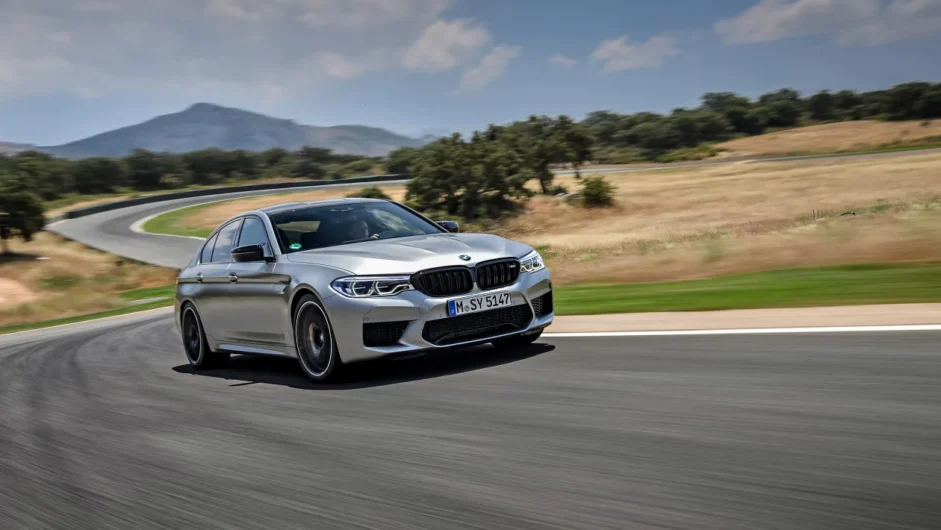
Seek out some corners and you’ll quickly find the M5 now responds with greater alacrity to the (still too mute) steering, the front tyres biting harder on turn-in. It helps give the Comp a remarkable sense of agility for such a big machine, a sensation that’s enhanced by remapped dampers (Sport is best for hard road driving – Sport Plus best reserved for the track, where the Competition performs rather better than you’d expect for a 1865kg saloon) and tougher springs, which keep the BMW planted and poised over the twisted and torn stretches of tarmac. It would be stretching the truth to say the Competition ‘shrinks around you’ – on some of the tighter sections of road the M5’s girth causes a sharp intake of breath as you squeeze past oncoming traffic – but it feels more nimble than before and far lighter on its feet than most rivals.
> Click here for our review of the Porsche Panamera Turbo
As before, the trick M xDrive transmission plays its part, delivering both rear-drive adjustability to keep things entertaining and assured traction when it gets slippery. Like the standard M5 you can also shortcut your favourite driver settings using the M1 and M2 buttons on the dash, including the hooligan 2WD mode, which delivers the sort of lazy drifts you’d expect from such a long and stable machine.
The problem with the M5 Competition is that while the package is arguably one of the most complete of any supersaloon in the 2020s so far, its anodyne soundtrack and distant steering make it somewhat less satisfying to drive on the road in comparison to the AMG. It’s an undoubtedly talented performance car, but one that doesn’t elicit the sense of drama or fun that you might expect.
L/100gm and running costs
Hot-V V8 engines have a reputation of quite astonishing fuel consumption when being worked and BMW’s is no different. During our time with the non-Competition M5 on our Fast Fleet we usually averaged between 10.8 and 10 L/100km, but given enough space would easily drop into the teens when you put your foot down.
The near-two-ton kerb weight has other compromises such as an appetite for tyres, brake pads and suspension components. BMW’s standard-fit Michelin Pilot 4 S tyres aren’t as aggressive as some, but the 275- and 285-section front and rear tyres to fit the Competition’s standard 20-inch wheels will cost between $1000 and $1500 a set to replace.
Interior and tech
The F90’s interior is one based on an aesthetic that has since been replaced by a newer design, but that’s no bad thing. The M5’s cabin is beautifully constructed and features better materials than many rivals. Despite the slightly more old-fashioned layout compared to those of the new RS6 and E63, the M5’s digital interfaces are still crisp and bang up to date, while the traditional click wheel and physical HVAC controls are reassuring and familiar in a good way.
The M5’s aesthetic upgrades over the standard 5-series models are both subtle and not so subtle. BMW’s new M Drive buttons now sit on red prongs on the still-too-thick steering wheel, but work really well in giving you access to the configurable M modes. The gear selector is also bespoke to the M5, with a different operating system to that of standard BMW models, instead mimicking the older SMG selector pattern. While this seems like a needless complexity over standard models, it does make the M5 feel more special than its lesser siblings, even if the change is purely semantic as the transmission underneath is still a standard automatic.

Elsewhere, the huge seats are supportive and comfortable, covered in high-quality leather and even feature an illuminated M5 badge when you unlock the car from outside, if that’s your sort of thing. For those after a more subtle interior, traditional leather colours and optional timber trim can replace the copious gloss carbonfibre elements if specified.
Design
The BMW M5 might have supercar-toppling performance, but it certainly ranks as one of the more subtle supersaloons on the aesthetic scale. The standard G10 BMW 5-series is itself a restrained design, but the M5’s relative lack of bespoke body addenda outside of its mildly widened front wings and quad exhaust pipes is far more subtle than an RS6’s cartoonishly wide body or the E63 S’s bespoke nose cone.
The Competition model did include a few extra inclusions when launched, including a fresh set of forged 20-inch wheels, darkened tail lights and a black rear diffuser section, but with that comes a blackened grille which although increasingly popular, is a jarring element.
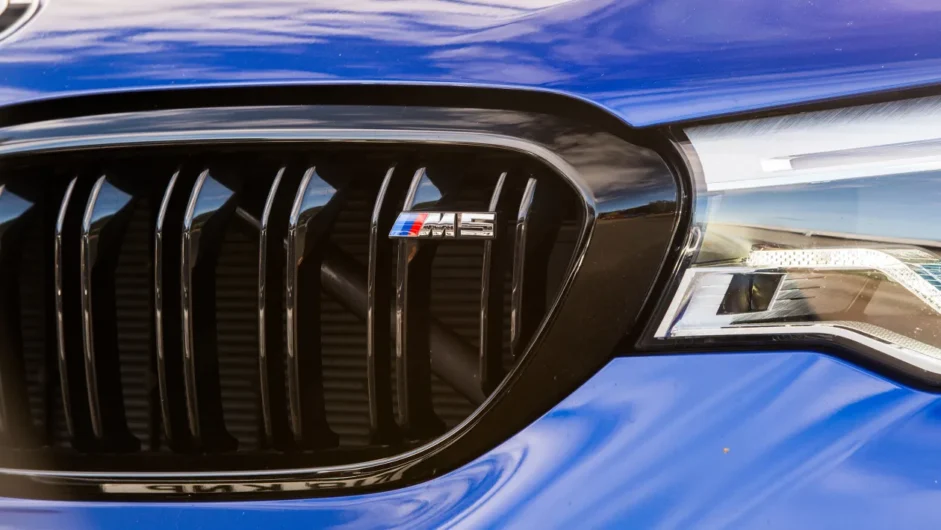
For some, the M5’s understated approach will be preferable, but whether you’re a fan of a more outlandish aesthetic or not, it does struggle to feel as special or bespoke as its rivals. Forage through the expensive and wide-ranging BMW Exclusive catalogue though and there’s a plethora of retro-inspired finishes inside and out that do lift the M5’s design. Just be prepared to pay for it
This article originally appeared at evo.co.uk
Copyright © evo UK, Autovia Publishing

